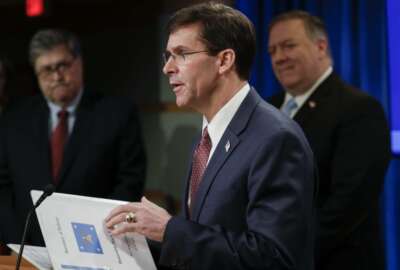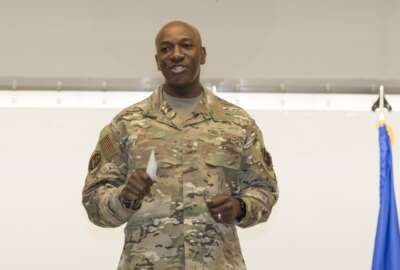
Army isn’t only green anymore as leaders address race
The Army is telling its leaders to take a more holistic interest in its soldiers to understand racial issues.
The Army is realizing it needs to expand the way it approaches race relations by doing more than just putting a Band-Aid on what is happening in the workplace, and taking a holistic look at individual soldiers and their struggles. It’s now telling its command, squad and other leaders to manage in a more caring and well-rounded fashion to accommodate that.
The concept mirrors the way the Army is trying to change its talent management system by looking deeper into all aspects of a soldier and their life to take advantage of skills, be a more empathetic employer and improve quality of life.
For years, the Army taught soldiers to “see green” when it came to race, meaning soldiers should only see other soldiers as brothers at work.
However, the service is now coming around to the idea that it needs a more nuanced tack that acknowledges differences and then focuses on inclusivity.
“In one of my listening sessions one of the soldiers said ‘When you say, “All I see is green” you don’t see all of me,’” the Army’s top enlisted soldier, Sgt. Maj. Michael Grinston, said Monday at an Association of the United States Army event. “The soldier said ‘You don’t see when I take off my uniform and I go out that gate that people will treat me differently because of the color of my skin. You can’t see that when I go home that I’ve had a gun to my head 13 times since I’ve been in the Army.’”
Grinston said he no longer says, “All I see is green” because only acknowledging someone is in the Army does not take into account the backgrounds and experiences of soldiers.
Grinston is encouraging soldier leaders to learn about and take into account all aspects of their subordinates.
That includes having individual and group conversations, checking in with soldiers, talking about current events, learning about soldiers’ backgrounds and hearing their points of view on a wide variety of issues.
“Racism is happening in our country and everybody needs to sit down and have this conversation,” Grinston said. “If you’re not having these conversations and you’re saying ‘It’s not happening in my unit’ then you’re ignoring it. It’s happening.”
The military has been scrambling to address racial issues as citizens across the nation have marched against systemic racism built into institutions of power after multiple episodes of police brutality against Black people.
The shooting of Jacob Black by a police officer in Wisconsin reignited an already raw situation that started early this summer with the death of George Floyd.
The Defense Department is taking some steps to look at how it handles race since the protests have started.
Defense Secretary Mark Esper announced a six-month review board in June to increase diversity and better equality in the military.
“We are not immune to the forces of bias and prejudice — whether visible or invisible, conscious or unconscious,” Esper said in a video posted on Twitter. “We know this bias burdens many of our service members, and has direct and indirect impact on the experiences of our minority members, the cultural and ethnic diversity of the force, and representation in our officer ranks. These things have no place in our military; they have no place in our country.”
The military services banned the use of photos in promotion boards to level the playing field.
However, the military has a lot of issues to correct. Only two of its 41 four-star generals are black, some troops have been connected to white supremacist groups and even been arrested for planning attacks, and the military judicial system has been found to unfairly target service members of color.
“We just have a lot of work to do and we just have to get after this,” Maj. Gen. Daniel Lecce, staff judge advocate to the Marine Corps commandant told Congress in June. “We realize we are at the beginning. We are looking at data, we are trying to understand the data, but there’s a lot of hard work that has to be done.”
Copyright © 2024 Federal News Network. All rights reserved. This website is not intended for users located within the European Economic Area.
Scott Maucione is a defense reporter for Federal News Network and reports on human capital, workforce and the Defense Department at-large.
Follow @smaucioneWFED





